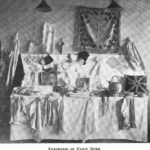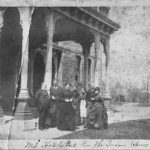Peter Thompson Good Boy was sent to the Government Hospital for the Insane (St. Elizabeths) even though he lived in South Dakota and should logically have been sent to the Canton Asylum for Insane Indians. Except for his accusation that a neighbor had instigated his diagnosis and deportment, Good Boy displayed no signs of psychosis, exhibited exemplary behavior at St. Elizabeths, and had received an offer of employment. Nevertheless, he was transferred to the Canton Asylum in 1916 at the age of 39.
There, Dr. Harry Hummer diagnosed Good Boy with congenital “constitutional inferiority,” a condition meaning a person was below average physically or mentally. This diagnosis also implied that the person could not quite fit in or conform to the expectations of society, and/or had little moral discipline.
Good Boy had served three years in the Army and two years as an Indian policeman, then became a farmer and married. Earlier in life, he had been arrested and sentenced to serve five years in the penitentiary, but served only two years before being pardoned by the Governor [of SD]. While he was in prison, he had been trusted and given many privileges.
Patient notes at Canton Asylum state that Good Boy was clean and tidy, sociable, and friendly, but sometimes excitable and profane. He had a good memory, liked to read, liked to work, and though sometimes became very angry, “seemed good natured at heart.” Good Boy’s biggest issue at the asylum was that he talked “against the Superintendent, the attendants, and the place in general.” If Good Boy was not insane, his behavior was certainly understandable.
Fortunately, whether through the efforts of others or Hummer’s eventual decision that he could fit into reservation life, Good Boy was released from the Canton Asylum for Insane Indians in 1918. Unfortunately, his stay in jail and at the two insane asylums (May 1913 – 1918) was far longer than the two-year and three-year terms in the penitentiary that his two companions received for their part in the horse theft incident.








